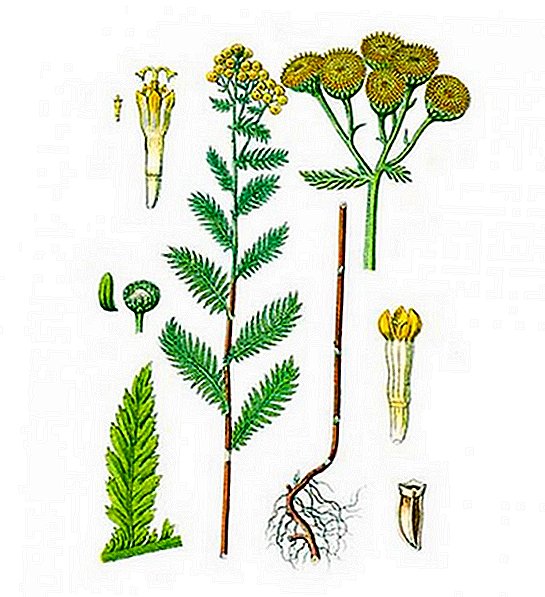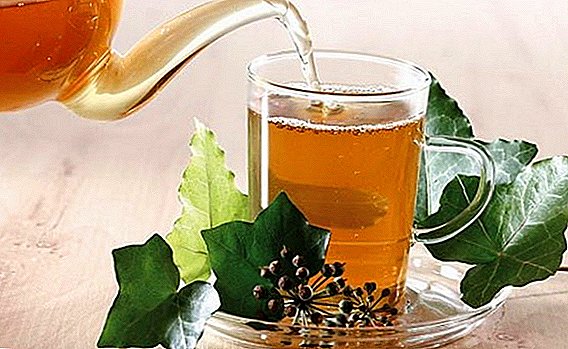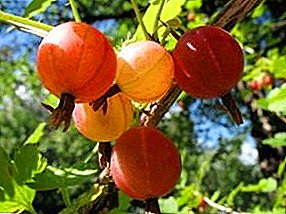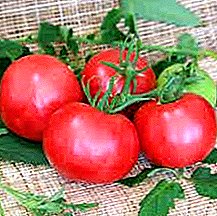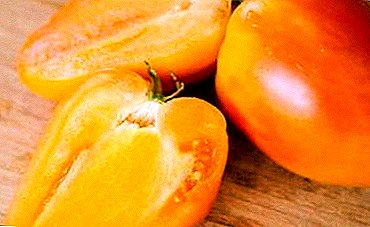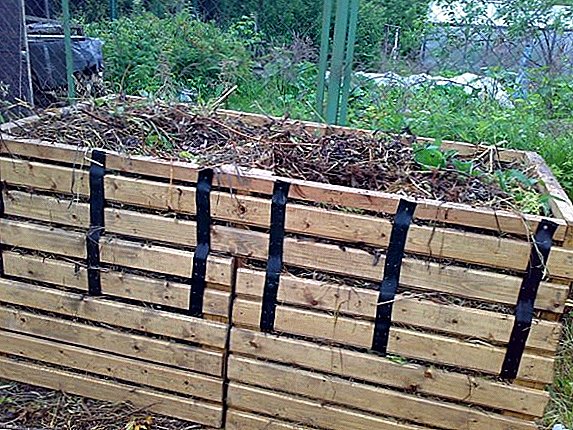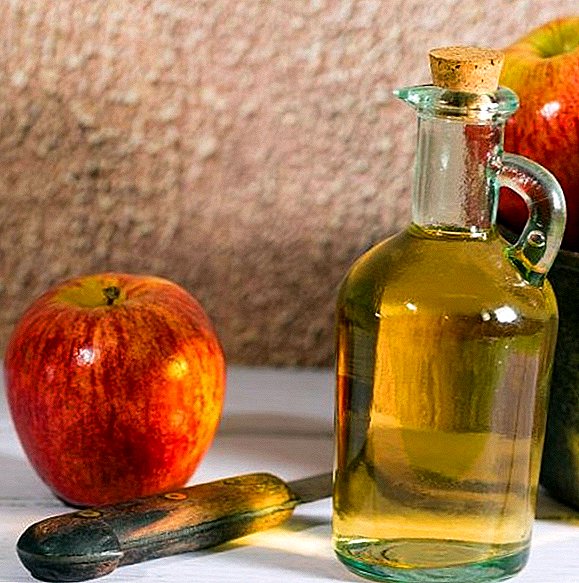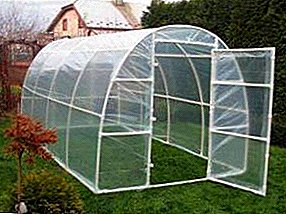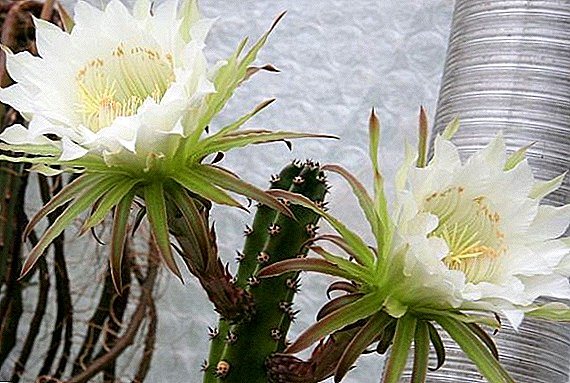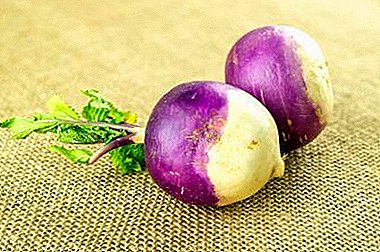
Rutabaga is a vegetable that tastes like a turnip. Rutabaga is also called bukva, kalega, rutabagy and swedish turnip. The plant is very popular not only in the domestic market, but also in Europe. This is due to the fact that the vegetable is unpretentious in cultivation and subsequent storage, contains many nutrients and is affordable. Some mistakenly believe that turnips are used only for feeding pets, but this is not the case. Due to their properties, certain varieties are used in cooking, medicine and cosmetology.
Chemical composition
Vegetable calorie - 37 kilocalories. The chemical composition of swede:
- 1.2 g of proteins;
- 0.1 g of fat;
- 7.7 grams of carbohydrates.
Rutabagus contains vitamins:
- WITH;
- R;
- IN 1;
- AT 2.
Minerals:
- sodium;
- iron;
- potassium;
- calcium;
- phosphorus.
A photo
In the photo below you can see how swede looks like.





Health Benefits
- Rutabagus contains a lot of vitamins and other nutrients that are well preserved during heat treatment and long-term storage of the fruit. For this, they love it and apply it in many spheres: in cooking, in traditional medicine, and in cosmetology.
- The swede is used as an anti-cancer agent. It contains important phytochemical compounds glucosinolate, which prevent the appearance and development of malignant tumors.
- One fruit contains about half the daily intake of vitamin C, which makes the vegetable almost indispensable in the cold and flu season. Moreover, vitamin C acts as an antioxidant, helps to eliminate toxins from the body.
- Thanks to vitamin B6, the product improves the absorption of unsaturated fatty acids, normalizes muscle and heart work. And vitamin B9 is involved in blood formation, regulates fat metabolism in the body.
- The product has a beneficial effect on the skin, helps to eliminate acne, can be used as an additional source of vitamins for dermatitis and eczema.
- Vegetable has a positive effect on the digestive system.One fruit contains about 15% of the daily value of fiber, which is necessary for the normalization of metabolism. It is also used for constipation: it is proven that the use of swede leads to the normalization of bowel activity.
- Magnesium, which is contained in the vegetable normalizes the nervous system, breaks down glucose, removes toxic substances from the body that can accumulate over the years.
- Vegetable can be used as an antibacterial agent - swede juice is able to heal small wounds, cuts.
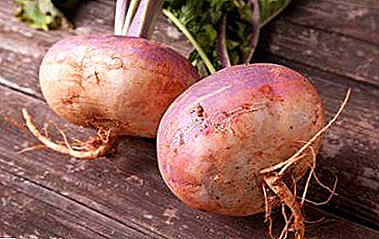 The fruit contains carotenoids - substances that have a positive effect on the eyes. Due to their high content, the use of swede reduces the risk of cataracts.
The fruit contains carotenoids - substances that have a positive effect on the eyes. Due to their high content, the use of swede reduces the risk of cataracts.- The rutabaga also contains potassium, which is good for the cardiovascular system. It reduces the risk of heart attack and helps normalize blood pressure.
- Due to the high sodium content, the vegetable is able to maintain the balance of water and salt in the body, normalize the work of the kidneys.
- Contains vitamin K, which improves blood quality and contributes to its clotting, increases bone density and prevents fractures.
We offer to watch a video about the useful qualities of swede:
Benefits for men
Proved that regular use of swede can reduce the risk of baldness, which is very important for many men over 45. Also, the vegetable helps to increase stamina during intense physical exertion, which is important for men engaged in physical work or athletes.
For women
Many women note that swede consumption can make PMS symptoms less noticeable. And nursing mothers notice an increase in the amount of breast milk. Moreover, the vegetable perfectly contributes to reducing excess weight - with a low calorie content, the product is very rich in vitamins and nutritious.
For kids
Due to high calcium content the fruit is very useful for children's teeth and bones that are constantly growing and developing. Swede can also be given to children as a natural immuno-strengthening remedy, especially in the cold season, when the risk of getting sick is high.
Possible harm
Vegetable can harm only those people who have contraindications to the use of the fetus.
It may be allergies, diseases of the gastrointestinal tract and other diseases described below.
Contraindications
 In general, the vegetable is considered useful and completely harmless, but only for those people who do not suffer from certain diseases and characteristics of the organism. These include those who have diseases of the gastrointestinal tract in the stage of inflammation. Fiber, which is contained in this vegetable, has a beneficial effect on the intestines, but only in a healthy person. Otherwise, fiber may cause irritation of the mucous membrane, which will only aggravate the disease.
In general, the vegetable is considered useful and completely harmless, but only for those people who do not suffer from certain diseases and characteristics of the organism. These include those who have diseases of the gastrointestinal tract in the stage of inflammation. Fiber, which is contained in this vegetable, has a beneficial effect on the intestines, but only in a healthy person. Otherwise, fiber may cause irritation of the mucous membrane, which will only aggravate the disease.- Swede reduces the amount of sugar in the blood, which is why it is often prescribed to people suffering from diabetes. But to use this vegetable with drugs that lower blood sugar levels, you need to be careful, after consulting with your doctor.
- Also, doctors are not advised to give swede to children under 4 years old - their body will be hard to cope with the large amount of fiber, which is contained in the vegetable.
- People who suffer from inflammation of the bladder and kidneys, too, should not eat swede. The same can be said about those who suffer from gout, since a large number of purine bases can provoke an exacerbation of the disease. In other cases, such a fruit brings only benefit. But you can not use it too much. 2-3 fruits per week are enough for an adult.
Recipes of traditional medicine
Vegetable love for its rich composition of vitamins and mineralsthat are great at treating certain diseases.
When coughing
Traditional medicine uses turnips to treat pulmonary diseases. So, in order to prepare a cough remedy, you will need:
- 200 grams of peeled vegetable;
- 20 grams of butter, honey and walnuts.
Swede need to cut into cubes and stew together with all the other ingredients. The resulting mixture should be consumed daily in a tablespoon 3 times a day after meals. It is necessary to eliminate the symptoms of the disease.
As a diuretic
Every morning and every evening before eating, drink 100 ml of fresh fruit juice. The result is usually visible on the first day of application.
For cleaning vessels
 For this, there is a very popular folk method - a whole vegetable is cut into two parts, a core is cut out in each half.
For this, there is a very popular folk method - a whole vegetable is cut into two parts, a core is cut out in each half.
In the resulting hollow place put a spoonful of honey and leave overnight or all day. Swede will begin to secrete juice that needs to be drunk.
Each half can be used several times until the fetus stops giving juice. This tool is also useful for strengthening blood vessels.
To combat obesity
As mentioned earlier, rutabaga - low-calorie, but very nutritious productwhich is also rich in fiber. To combat excess weight, you can bake, simmer or fry rutabaga - use it in any form. Even a large portion of the ready meal from the swede is very low-calorie, so you can replace it with, for example, the usual full meal.
From anemia
A vegetable alone cannot cure a disease, but it can effectively prevent its occurrence. To do this, you should regularly drink 100 ml of fresh fruit juice per day.
Burns
In this way, it is possible to treat not only burns, but also purulent wounds. For this you need:
- Grate a small amount of swede on a fine grater;
- roll the resulting gruel into gauze and apply to the damaged area of the skin as a compress.
For constipation
This vegetable is considered one of the best to eliminate constipation.. For chronic constipation, you need to use 250 grams of mashed stew or baked rutabaga 2-3 times a week. There is a need to mash in the evening, and in the morning the result is not long in coming.
Application in cosmetology
Some recipes have come to us through many decades, as our great-great-grandmothers used them. Modern girls are happy to learn from past generations. So, what is useful and how is a vegetable used to maintain beauty?
From freckles
 Based on turnip juice make a kind of lotion. To make it you need:
Based on turnip juice make a kind of lotion. To make it you need:
- Mix swede juice with lemon juice in a ratio of one to one.
- The resulting mixture must be wiped daily face.
It is best to use this tool throughout the entire period when the sun shines brightly in summer and spring. It was at this time that freckles are most actively manifested on the skin and those who do not like it, have to deal with it.
To moisturize the skin
Based on the vegetable make moisturizing mask. To make it you need:
- Mix one tablespoon of finely grated swede with a teaspoon of sour cream.
- The resulting mixture is applied to the face.
The duration of the procedure is 15 minutes, after rinsing the slurry with cool water. You can make this mask twice a week.
To saturate the skin with vitamins
Another useful and easy to prepare mask:
- Grate on a fine grater swede should be mixed with the same grated cucumber in the ratio of one to one.
- The resulting gruel should be applied to clean skin, leave for 10-15 minutes and rinse with warm water.
Such a tool evens the tone of the face, the skin becomes radiant and smooth.
Rutabaga is really an amazing root vegetable, which for some reason is underestimated by many. It can be eaten, used in the treatment of many diseases, and used in cosmetology. Given the low cost and high saturation of useful substances, we can say that rutabaga is truly a magical universal remedy.


 The fruit contains carotenoids - substances that have a positive effect on the eyes. Due to their high content, the use of swede reduces the risk of cataracts.
The fruit contains carotenoids - substances that have a positive effect on the eyes. Due to their high content, the use of swede reduces the risk of cataracts. In general, the vegetable is considered useful and completely harmless, but only for those people who do not suffer from certain diseases and characteristics of the organism. These include those who have diseases of the gastrointestinal tract in the stage of inflammation. Fiber, which is contained in this vegetable, has a beneficial effect on the intestines, but only in a healthy person. Otherwise, fiber may cause irritation of the mucous membrane, which will only aggravate the disease.
In general, the vegetable is considered useful and completely harmless, but only for those people who do not suffer from certain diseases and characteristics of the organism. These include those who have diseases of the gastrointestinal tract in the stage of inflammation. Fiber, which is contained in this vegetable, has a beneficial effect on the intestines, but only in a healthy person. Otherwise, fiber may cause irritation of the mucous membrane, which will only aggravate the disease.